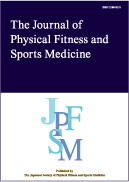Volume 2, Issue 3
Displaying 1-19 of 19 articles from this issue
- |<
- <
- 1
- >
- >|
Review Article
-
2013Volume 2Issue 3 Pages 259-266
Published: August 25, 2013
Released on J-STAGE: September 08, 2013
Download PDF (1445K) -
2013Volume 2Issue 3 Pages 267-274
Published: August 25, 2013
Released on J-STAGE: September 08, 2013
Download PDF (3589K) -
2013Volume 2Issue 3 Pages 275-286
Published: August 25, 2013
Released on J-STAGE: September 08, 2013
Download PDF (1586K) -
2013Volume 2Issue 3 Pages 287-294
Published: August 25, 2013
Released on J-STAGE: September 08, 2013
Download PDF (2893K) -
2013Volume 2Issue 3 Pages 295-300
Published: August 25, 2013
Released on J-STAGE: September 08, 2013
Download PDF (1134K) -
2013Volume 2Issue 3 Pages 301-310
Published: August 25, 2013
Released on J-STAGE: September 08, 2013
Download PDF (1183K) -
2013Volume 2Issue 3 Pages 311-318
Published: August 25, 2013
Released on J-STAGE: September 08, 2013
Download PDF (1647K) -
2013Volume 2Issue 3 Pages 319-324
Published: August 25, 2013
Released on J-STAGE: September 08, 2013
Download PDF (1241K) -
2013Volume 2Issue 3 Pages 325-332
Published: August 25, 2013
Released on J-STAGE: September 08, 2013
Download PDF (1305K)
Short Review Article
-
2013Volume 2Issue 3 Pages 333-335
Published: August 25, 2013
Released on J-STAGE: September 08, 2013
Download PDF (933K) -
2013Volume 2Issue 3 Pages 337-339
Published: August 25, 2013
Released on J-STAGE: September 08, 2013
Download PDF (1149K) -
2013Volume 2Issue 3 Pages 341-345
Published: August 25, 2013
Released on J-STAGE: September 08, 2013
Download PDF (1094K) -
2013Volume 2Issue 3 Pages 347-350
Published: August 25, 2013
Released on J-STAGE: September 08, 2013
Download PDF (944K) -
2013Volume 2Issue 3 Pages 351-353
Published: August 25, 2013
Released on J-STAGE: September 08, 2013
Download PDF (882K) -
2013Volume 2Issue 3 Pages 355-360
Published: August 25, 2013
Released on J-STAGE: September 08, 2013
Download PDF (1243K) -
2013Volume 2Issue 3 Pages 361-363
Published: August 25, 2013
Released on J-STAGE: September 08, 2013
Download PDF (1111K)
Regular Article
-
2013Volume 2Issue 3 Pages 365-372
Published: August 25, 2013
Released on J-STAGE: September 08, 2013
Download PDF (1299K) -
2013Volume 2Issue 3 Pages 373-379
Published: August 25, 2013
Released on J-STAGE: September 08, 2013
Download PDF (1331K)
Short Communication
-
2013Volume 2Issue 3 Pages 381-384
Published: August 25, 2013
Released on J-STAGE: September 08, 2013
Download PDF (1032K)
- |<
- <
- 1
- >
- >|
